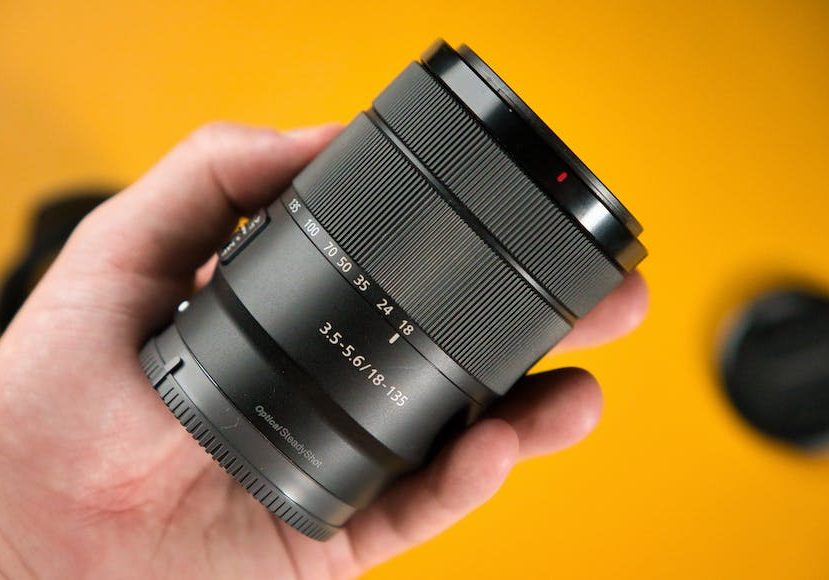
Lens Abbreviations: What Those Numbers & Letters Mean
Decode the mystery of camera lens abbreviations with the meaning of those cryptic numbers and letters, simplifying lens selection for photographers.
Learn | By Ana Mireles
Are you confused by all the letters and numbers on your camera lens? Are you having trouble identifying the name of a lens model due to its multiple abbreviations?
You’re not alone. Manufacturers use a series of codes that identify the capabilities and characteristics of a particular lens.
However, some change from one brand to another and it can get overwhelming.
So, here’s a comprehensive guide to understanding what all the lens abbreviations mean.
Plus, I’ve included some examples at the end to show you how to use the codes as a guide the next time you’re looking for a lens.
Common Camera Lens Abbreviations
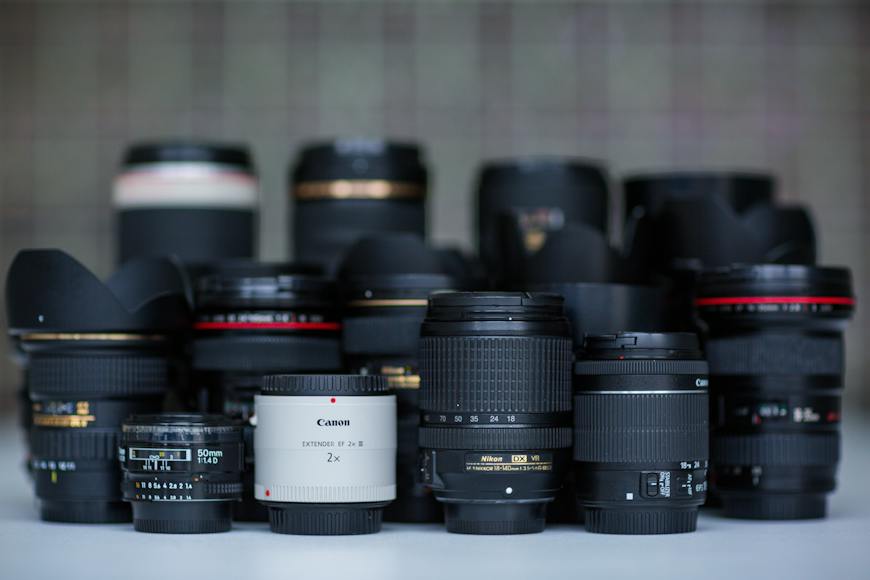
Credit: Antony Trivet
mm (focal length) – When you see a number followed by mm, it refers to the lens’s focal length. A telephoto lens might have a 200mm inscription, and a nifty-fifty will say 50mm. Zoom lenses have a minimum and maximum range – for example, 18-55mm.
1: x (aperture) – All lenses have the widest aperture written on them. In most cases, the f/number is preceded by 1: – for example, 1:2.8 means that the maximum aperture is f/2.8. Zoom lenses have the widest aperture of the shortest and longest focal range – for instance, 1:3.5-5.6.
(See our Guide to Aperture to learn more about f/numbers.)
ø – This indicates the diameter of the lens. When you buy filters, caps, and hoods, make sure that they have the same diameter.
Macro – Most lens manufacturers use the word macro to indicate that the lens is suited for macro photography or extreme close-ups. The exceptions are Nikon (Micro-NIKKOR) and Leica (Macro-Elmar).
AF (Auto Focus) indicates you can use the lens with autofocus.
MF (Manual Focus) is when you turn off the auto-focus and focus manually.
APO (Apochromatic) – These lenses produce less chromatic aberration than the average lens.
ED (Extra-low Dispersion) is another nomenclature designating lenses designed to reduce chromatic aberration.
IF (Internal Focus) – These lenses focus only by moving internal pieces. On the outside, the lens remains the same size.
Canon Lens Abbreviations
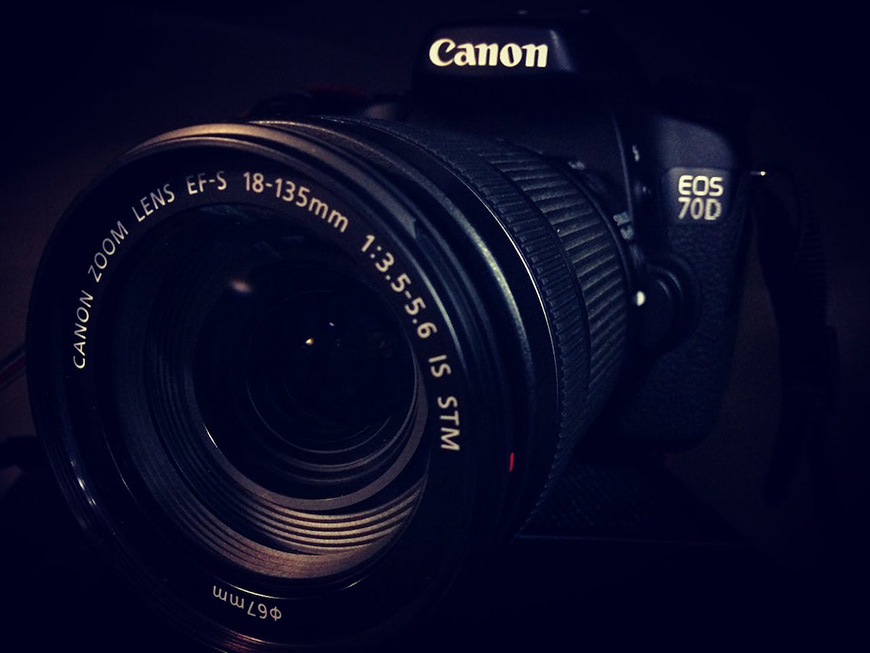
Credit: Creative Bheja
EF (Electro-Focus) – used in DSLR lenses.
EF-S (Electro-Focus Short back focus) lets you know that the lens is made for cameras with APS-C sensors.
RF (Rethink Full-frame) – These lenses are made for full-frame mirrorless cameras.
EF-M (Electro-Focus Magnified) – These lenses are designed for APS-C mirrorless cameras like EOS M.
STM (Stepping Motor) – This Canon technology marks smoother and quieter autofocus lenses.
How Much Do You REALLY Know About Photography?! 🤔
Test your photography knowledge with this quick quiz!
See how much you really know about photography...

USM (Ultrasonic Motor) – Another technology that signals faster and quieter autofocus.
IS (Internal Stabilization) – The image stabilization helps diminish camera shake.
L (Luxury) – These are Canon’s highest-quality lenses.
DO (Diffractive Optics) – These lenses use diffractive optics to reduce the size and weight.
TS-E (Tilt-Shift) – These lenses allow you to move the axis to control perspective.
MP-E (Macro) – These are the line of lenses that allow macro photography.
- Read more: 10 Best Canon EF-Mount Lenses
Note that Canon also uses color codes to categorize its lenses. While these categories haven’t been used 100% of the time, this is what they usually mean:
- Red line = L (Luxury line)
- White barrel = Super-telephoto lenses from the professional lineup
- Gold line = EF lens with UFM
- Silver line = EF-S lens with UFM
Nikon Lens Abbreviations

Credit: Dids
Nikkor – This is the general branding for Nikon lenses.
F – This represents the lens mount for Nikon lenses.
DX – These are Nikon’s lenses for APS-C cameras.
FX – These lenses fit Nikon’s full-frame cameras.
G – It indicates that the lens doesn’t have an aperture ring.
E – This represents Nikon’s electromagnetic aperture control system.
VR (Vibration Reduction) – This means the lens has a built-in optical stabilization system.
AF – S (Auto Focus Silent Wave Motor) – This mechanism allows quiet and fast auto-focusing.
AF-P (Auto Focus Pulse Motor) – Some Nikon lenses have this nomenclature to indicate a quiet and smooth auto-focus.
Micro-Nikkor – These are the lenses that allow macro photography.
PC (Perspective Control) – This is the line of Nikon’s tilt-shift lenses.
S-Line – These lenses belong to the highest quality line in Nikon optics.
- Read more: What are the best Nikon lenses (FX & DX)?
Sony Lens Abbreviations
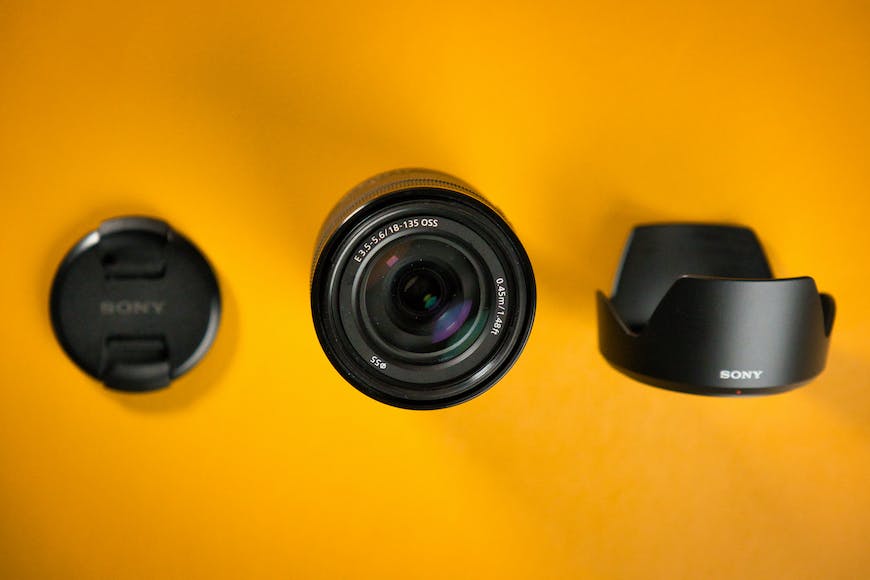
Credit: James Bernstein
FE – This indicates that the lens has an E-mount designated for full-frame mirrorless cameras.
E – These lenses are designed for Sony’s APS-C cameras.
DT – These are the lenses used in APS-C cameras.
SEL (Sony E-mount Lens) – This indicates that the lens is compatible with E-mount cameras.
G (G Master) – This letter corresponds to the premium line of lenses.
GM (G Master) – This is part of the G series designating the highest quality.
Zeiss – Sony often collaborates with Carl Zeiss to produce their lenses. This inscription indicates such collaboration.
SSM (Super Sonic Motor) – This is Sony’s name for the fastest and most quiet technology when using autofocus.
OSS (Optical Steady Shot) – This is Sony’s way of indicating that the lens has internal image stabilization.
PZ (Power Zoom) – These lenses have power zoom functionality.
Fujifilm Lens Abbreviations
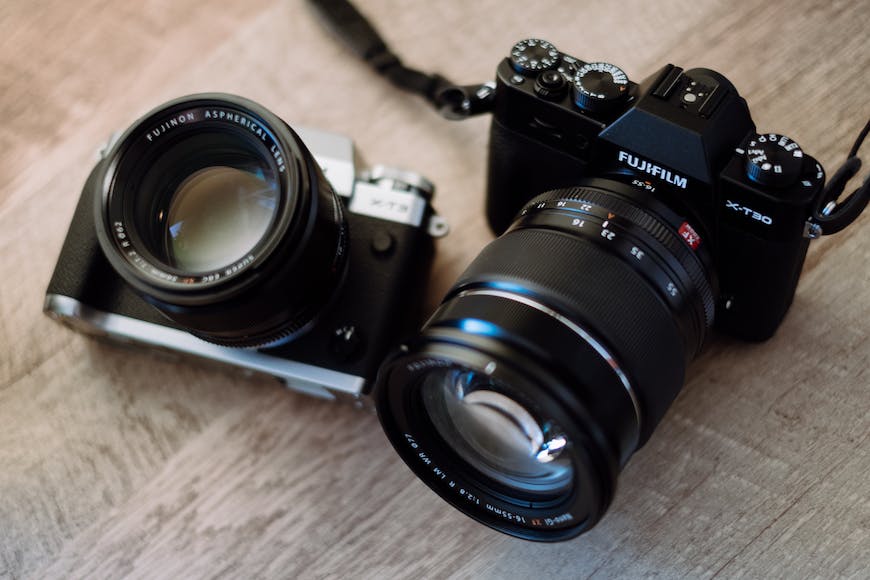
Credit: Fujifilm North America
XC – This is the regular lineup for Fujifilm cameras, primarily for the X-series.
XF – These are Fujifilm’s premium lenses designed for the X-series of mirrorless cameras.
WR (Weather Resistant) – These lenses have a weather-sealed construction that protects them from dust and moisture.
OIS (Optical Image Stabilization) – This is how Fujifilm marks the lenses with a built-in image stabilization system.
R (Ring) – These lenses have an aperture or focus ring.
LM (Linear Motor) – This is the technology used by Fujifilm for fast and quiet autofocus.
APD (Apodization Filter) – These lenses are treated with a special filter to create a smoother bokeh.
Super EBC – These lenses are treated with a high-quality multi-layer coat that reduces flare and ghosting.
MKX – These are Fujifilm lenses designated for video production.
- Read more: Best Fuji X-Mount Lenses for All Budgets
Olympus Lens Abbreviations
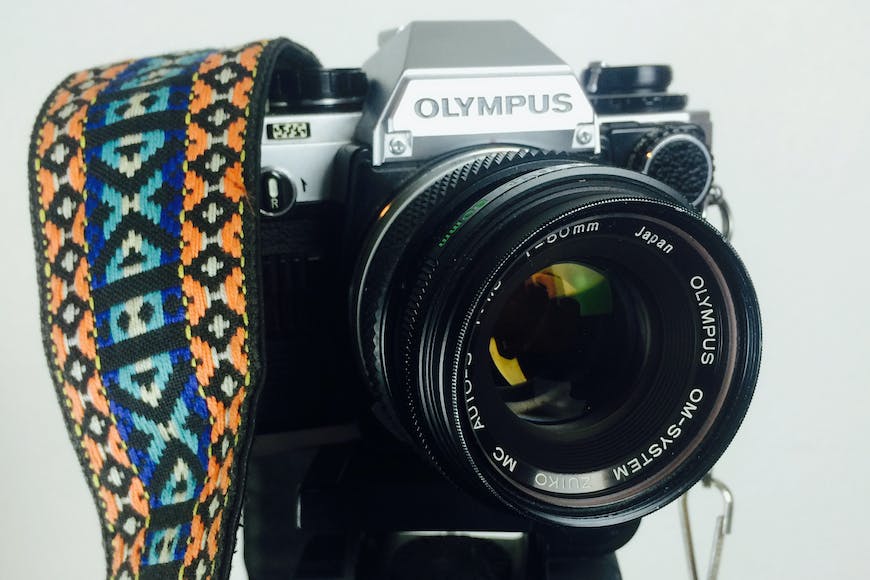
Credit: Stephen Niemeier
Zuiko – This is the traditional branding for Olympus lenses used in digital and film cameras.
M-Zuiko – These are the Olympus lenses for its Micro Four Thirds cameras.
PRO – This designates lenses that belong to the professional-grade line.
PREMIUM – This indicates Olympus’ high-quality lenses.
MSC (Movie and Still Compatible) – This indicates that the lens has a smooth and quiet autofocus suitable for video recording.
EZ (Electronic Zoom) – These lenses have a power zoom functionality.
Panasonic Lumix L-Mount Collaboration – Due to an agreement with both brands, some lenses are compatible with both Olympus and Lumix cameras thanks to the L-mount.
Panasonic Lens Abbreviations

Credit: Lisa Fotios
Lumix G – This is the regular branding for the Lumix Micro Four Thirds cameras.
Leica DG – Lenses with this inscription were made in collaboration with Leica.
Leica Vario-Elmarit – This is another inscription you may find in lenses developed in collaboration with Leica.
X – These are lenses with higher-quality optics and build.
OIS (Optical Image Stabilization) – This is Panasonic’s nomenclature for lenses with a built-in image stabilization system.
POWER O.I.S. – These lenses feature a more advanced image stabilization system to improve handheld shooting.
ASPH (aspherical) – These aspherical lenses are designed to correct optical aberrations.
H – HS – These two nomenclatures indicate the line-up to which the lens belongs.
Vario – This denotes Panasonic’s zoom lenses.
Summilux is the name of Panasonic’s high-speed lineup. This means that these lenses will have wider apertures.
Leica Lens Abbreviations
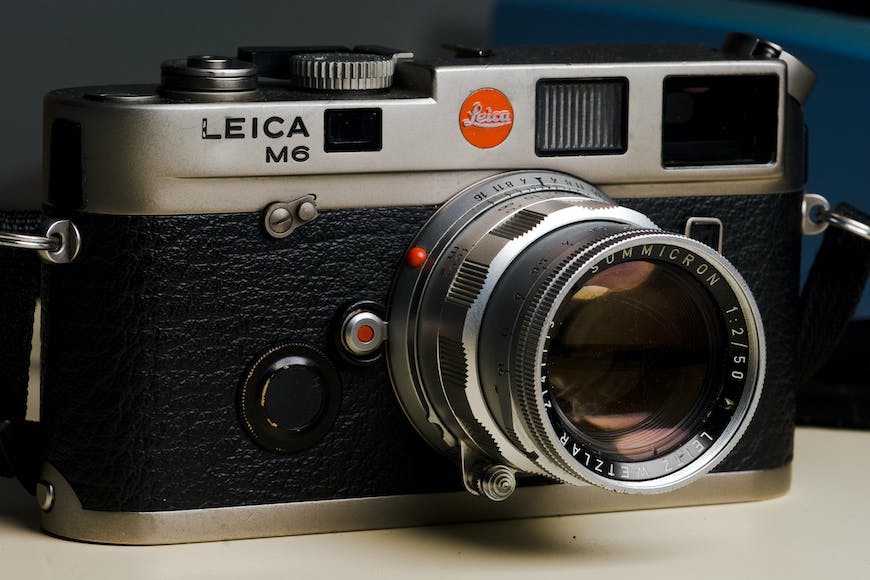
Credit: Marcello Sokal
Summilux – As mentioned in the previous section, these lenses are made in a Leica-Panasonic collaboration.
Summicron – This is a traditional Leica lens with a compact size.
Noctilux – These lenses have a wider-than-average aperture, making them more suitable for night photography.
M – This lineup is designated to the M-series of rangefinder cameras.
SL – These lenses are designed for the SL series of mirrorless full-frame cameras.
TL – These are the lenses for the APS-C mirrorless cameras.
R – These are the lenses for Leica’s R-series of SLR cameras.
S – The S lenses are suited for Leica’s medium format cameras.
ASPH (Aspherical) – These lenses diminish optical aberrations.
Macro-Elmar – This inscription indicates that you can use these lenses for extreme close-ups and macro photography.
Third Party Camera Lens Abbreviations
As you know, third-party manufacturers develop and build lenses that fit the most common camera brands on the market.
You’ll also find letters and numbers on these that are important to understand.
Sigma
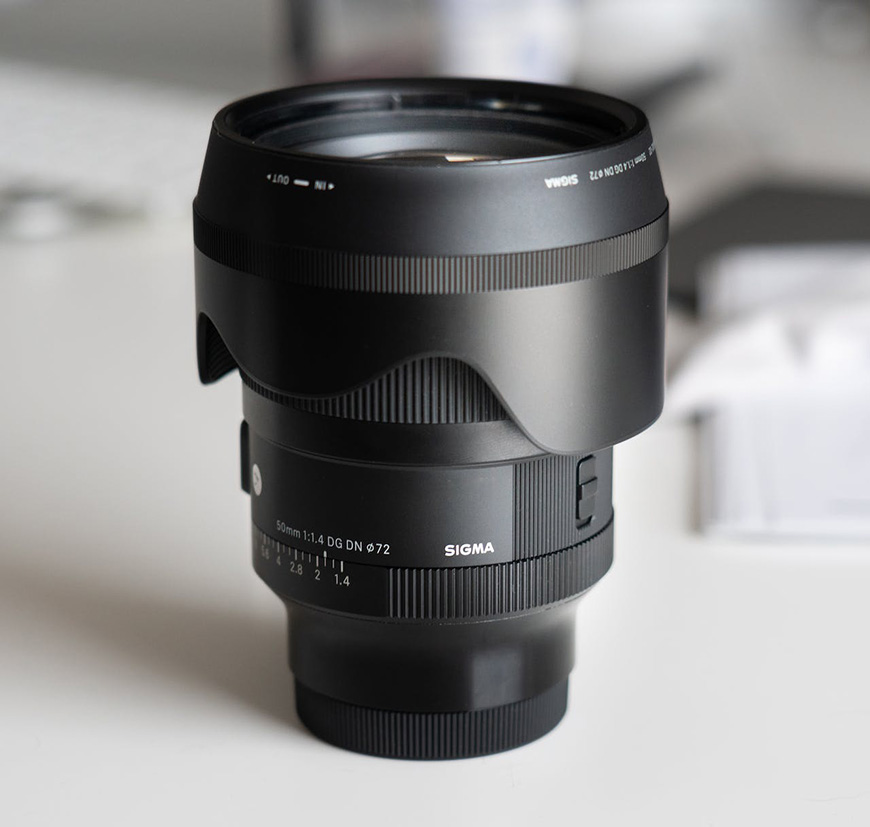
Credit: Jakub Zerdzicki
DC – These letters indicate that the lens is built for APS-C cameras.
DG – These are the lenses suited for full-frame cameras.
OS (Optical Stabilization) – This is Sigma’s equivalent to IS, meaning that the lens has an image stabilization system.
HSM (Hyper Sonic Motor) – This is Sigma’s designation for its faster and quieter auto-focus lenses.
Contemporary – This is a lineup of lenses developed to maintain good performance in compact lenses.
Sports – These lenses are designed with sports photography in mind.
Macro – This indicates that you can make extreme close-ups.
APO (Apochromatic) – These lenses are meant to correct chromatic aberration.
IF (Internal Focus) – These lenses only move internal elements when focusing.
TC (Teleconverter) – This means that a lens is compatible with Sigma’s teleconverters.
EX – In older lineups, EX designates the professional-grade lenses of the brand.
ART – Sigma Art is the name of the newer professional-grade lenses.
- Read more: Buyers Guide – Best Sigma Art Lenses
Tamron
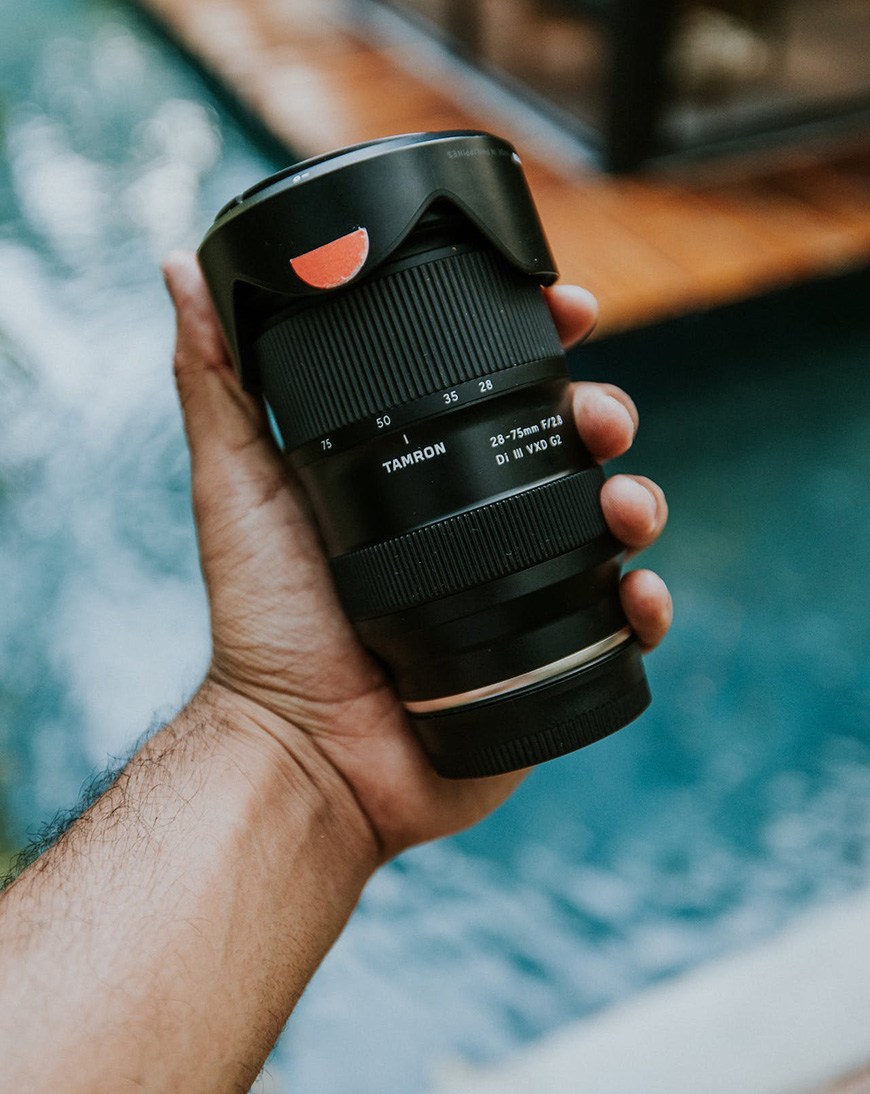
Credit: Amar Preciado
Di (Digitally Integrated) – This tells you that your Tamron lens was designed for digital cameras, whether APS-C or Full-Frame.
Di II – This name is for lenses made for APS-C cameras.
VC (Vibration Compensation) – This is Tamron’s name for the internal stabilization.
PZD (Piezo Drive) – Tamron’s autofocus motor.
USD (Ultrasonic Silent Drive) – Another technology used in autofocus motors.
XR (Extra Reflective Index) – These letters indicate that Tamron used special glass elements to make the lens lighter and more compact.
LD (Low Dispersion) – These lenses are designed to reduce chromatic aberration.
FEC (Filter Effect Control) – These lenses have an internal mechanism for rotating polarizing filters.
SP (Super Performance) – These are the highest-quality lenses produced by Tamron.
Tokina
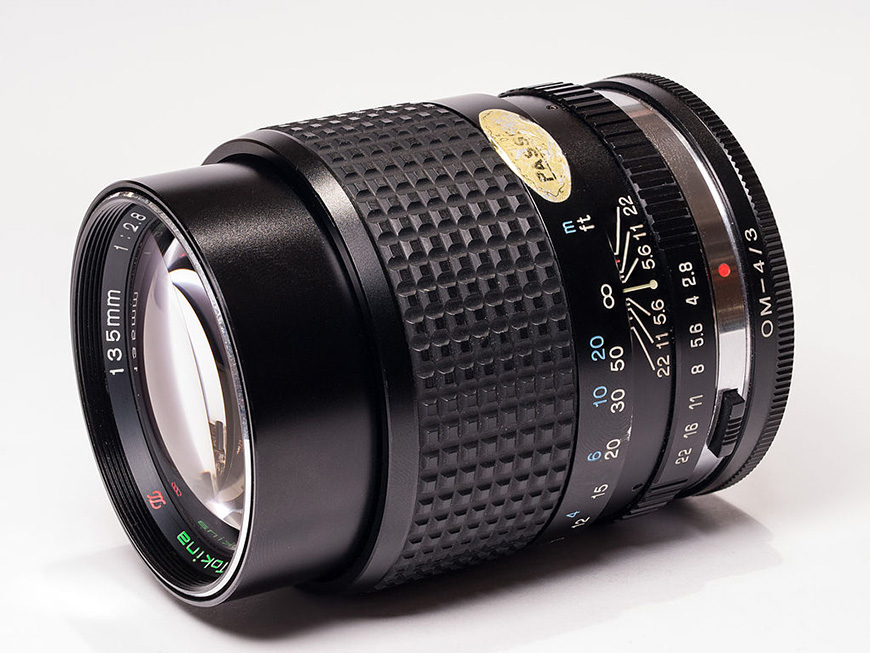
Credit: Uberprutser, CC BY-SA 3.0, via Wikimedia Commons
AT-X – This is the general branding for Tokina lenses.
ATX-i – This indicates the newer generation of Tokina lenses.
DX – These are the lenses for APS-C cameras.
FX – These lenses are for full-frame cameras.
FIRIN – These are lenses for mirrorless cameras.
SZX – These lenses are designed for Micro Four Thirds cameras.
SD – This means that the glass elements are intended to reduce chromatic aberration.
AT-X Pro – This is a professional line of lenses featuring the highest quality.
Opera – This is another line of professional-quality lenses.
Rokinon (AKA Samyang, Pro-Optic)
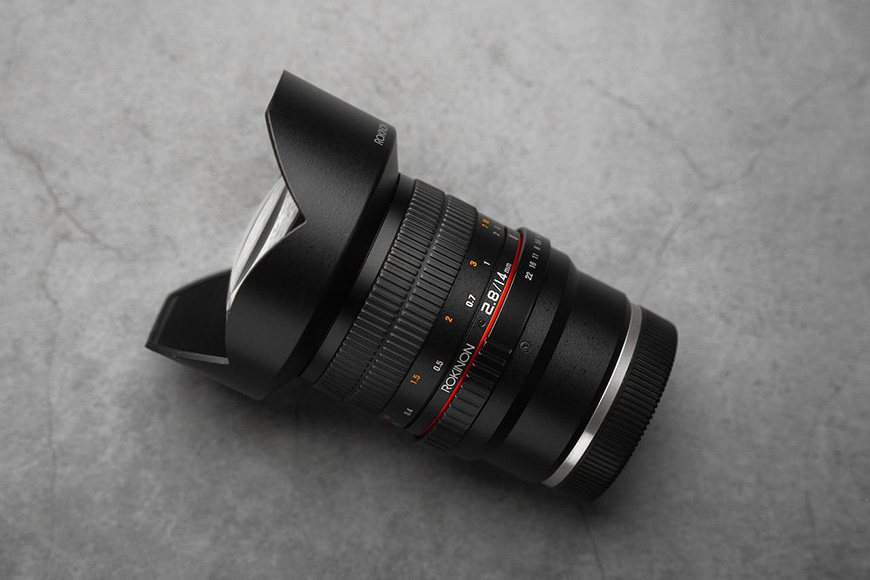
Credit: Jonathan Pagaoa
FE – These Rokinon lenses are built for Sony’s full-frame E-mount cameras.
T-S – These are tilt-shift lenses.
UMC – These lenses have a special coating to prevent ghosting and flare.
SP – This is the premium line of Rokinon lenses.
Cine DS – These lenses are designed for video making.
Cine DSX – These are the updated lineup for video making.
Xeen – These are the high-end lineup of cinematic lenses.
How to Choose the Right Lens For Your Camera (Using Lens Abbreviations)
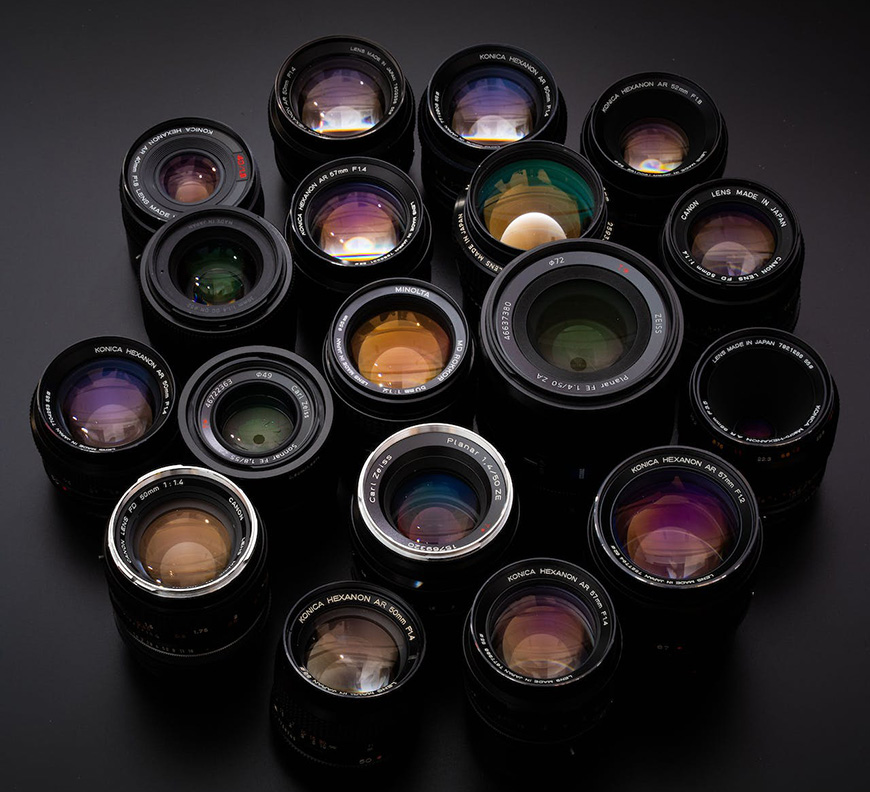
Credit: Mengliu Di
Choosing the right lens depends on many factors, from your needs to your budget.
Here, I’ll give you a few examples to show you how the abbreviations can help you narrow down your choices and pick the best lens for you.
Remember that these examples are meant to navigate the abbreviations when considering buying a new lens. There are no rules that you should follow to the letter.
You can always rent lenses before buying to see if they fit your needs and expectations.
Example 1:
Let’s say you have a Canon APS-C camera, such as the 90D, and you like portrait photography.
First, you need to check that the lens is an EF-S model because that’s the abbreviation that indicates that it will fit APS-C cameras.
Next, think about the focal length. Portrait photographers recommend short telephoto lenses such as an 85mm or a standard lens – which is a 50mm.
If you prefer a zoom lens to have more versatility, consider a 35-105mm.
Next, check the aperture. Portrait photography benefits from blurred backgrounds, so a wide aperture comes in handy.
If you choose a 50mm lens, you’ll easily find a 1:1.4 or 1:1.8 at an affordable price.
However, you might have to trade off the aperture with zoom lenses if you don’t want to blow out your budget. So, you can get the EF-S 55-250mm 1:4-5.6 if you stay at a lower price.
If you think you’ll be shooting often in low light conditions, make sure you have a lens with the letters IS. This way, it will have image stabilization that reduces the impact of camera shake while using slower shutter speeds.
Example 2:
Let’s see another example. You have a Nikon Z50 or any other model from the Nikon Z series, and you want a fast lens.
Let’s start by choosing a lens that matches the camera’s format – APS-C sensor. So, you’ll need a lens with a DX nomenclature on it.
Because you need a fast lens, your priority is the aperture – which is the number that starts with 1:. You’ll want to stick to the smallest numbers – 1:1.4 or 1:1.8.
Usually, these apertures are common and affordable on nifty-fifty lenses. So, a 50mm focal length is suitable and versatile for all sorts of photography.
However, if you prefer a zoom lens, the widest apertures might be around f/3.5 or f/4. Some example lenses for this might be the Z DX 16-50mm 1:3.5-5.6 VR or the Z DX 50-250mm 1:4-5.6 VR for a longer focal length.
Remember that the VR is Nikon’s way of marking that the lens has a built-in image stabilization.
Example 3:
This example is for Sony users. Let’s say you have a full-frame mirrorless, and budget is not an issue. You want to upgrade your lens to make fine-art landscape photography.
The first thing you need is to identify the camera mount and make sure the lens is compatible. Most likely, your camera has an E-mount, as this is the one Sony uses for their full-frame mirrorless cameras.
So, you’ll need a lens marked FE because these are specifically designed for E-mount cameras, and you’ll be able to make the most of their capabilities.
Since money is not a problem and you’re looking for the highest quality, you’ll want a lens marked GM. This is because the GMaster is the lens line with the highest optical quality and superior performance.
You’ll also want to make sure it has the letters OSS for optical stabilization. This is handy as you’ll often be in low-light situations around sunrise and sunset. Also, you’ll probably be doing focus stacking – which requires maximum sharpness and precision.
Then, it’s just a matter of deciding the focal length and aperture. Some common choices are the Sony FE 24mm 1:1.4 GM or the Sony FE 16-35mm 1:2.8 GM if you prefer a zoom lens.
Lens Abbreviation FAQs
What do the numbers and letters on lenses mean?
The numbers and letters on a lens describe the lens quality, capabilities, features, and technologies. While some are the same regardless of the brand, others change according to the manufacturer.
What does the F number mean on a lens?
The f/number in photographic terms refers to the aperture. The f/number written on a lens is the maximum aperture you can get.
You might see two f/numbers in zoom lenses – for example, 3.5-5.6. This shows the maximum aperture at both ends of the zoom. The widest aperture always corresponds to the shortest focal length.
What are the numbers on lens distance?
The lens distance refers typically to the minimum focusing distance. In other words, it tells you how close you can get to your subject and still get it sharp. Some lenses mark this in meters (#m), others in feet (#ft), and most lenses have both measurements.
Is USM better than HSM on a lens?
USM is a term used by Canon, meaning that the lens has an Ultrasonic Motor. Instead, HSM stands for Hyper Sonic Motor, and it’s the name used by Sigma. They’re pretty much equivalent.
What is IS on a lens?
The letters IS stand for Image Stabilization in most brands, although some might prefer VR. This feature reduces the impact of camera shake when using slow shutter speeds.

Check out these 8 essential tools to help you succeed as a professional photographer.
Includes limited-time discounts.










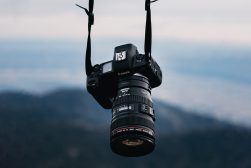



Useful article found a lot of stuff I didn’t realise before